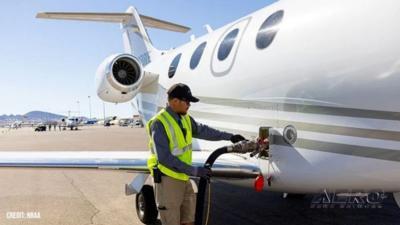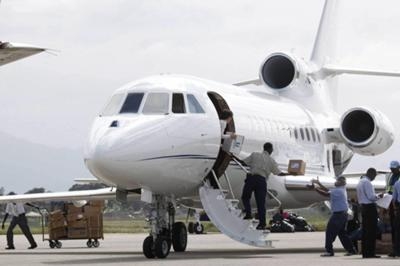Mon, Feb 03, 2025
GAMA and EBAA Study Warns Against Needlessly Restrictive Caps
A recent study revealed that business aviation has a nearly $104 billion impact on the European economy. However, EU proposals to cap short-haul flights and restrict airport slots threaten these benefits. The policies could jeopardize up to €120 billion in foreign investments and 104,000 jobs by 2030.

Commissioned by the General Aviation Manufacturers Association (GAMA) and the European Business Aviation Association (EBAA), the study affirms business aviation’s critical role in European connectivity. Without it, there would be no practical way to link remote areas, efficient medical transportation, or access smaller airports. The sector is also directly tied to upwards of a million jobs throughout Europe.
While one would think that these perks make government agencies want to support business aviation as much as possible, the EU’s new policies seem to be running in the opposite direction. Regulators have introduced proposals to limit short-haul flights and restrict the number of slots available for business aviation flights in some airports.
These changes don’t come without reason; business aviation is generally considered to generate significantly more emissions per passenger than other sectors due to its smaller passenger capacity and shorter flight distances. This fact has created plenty of public backlash and pressure to introduce policy reforms.

This point is where the conflict reaches a stalemate. “Policies that seek to constrain the growth of business aviation create implicit trade-offs between the environmental benefits arising from fewer flights and the foregone benefits associated with business aviation,” the study explained.
The research determined that the EU proposals could risk up to $125 billion in foreign direct investment (FDI) as well as more than 100,000 jobs over the next five years. Instead of these overly restrictive caps, EBAA Secretary-General Holger Krahmer argues, regulators “should focus on policies that support innovation, decarbonization, and competitiveness.”
One step that would satisfy both parties is increasing the utilization of sustainable aviation fuels (SAF). This could assist in decarbonizing business aviation while maintaining the current number of flights and their economic impact.
More News
Also: New Lakeland Fly-in!, Gleim's DPE, MOSAIC! Nearly three-quarters of a century in the making, EAA is excited about the future… especially with the potential of a MOSAIC>[...]
Estimated (EST) -When used in NOTAMs “EST” is a contraction that is used by the issuing authority only when the condition is expected to return to service prior to the >[...]
Aero Linx: Regional Airline Association (RAA) Regional airlines provide critical links connecting communities throughout North America to the national and international air transpo>[...]
The Airplane Broke Up In Flight And Descended To The Ground. The Debris Path Extended For About 1,435 Ft. Analysis: The pilot, who was the owner and builder of the experimental, am>[...]
From 2015 (YouTube version): History Comes Alive Thanks to A Magnificent CAF Effort The story of the Douglas C-47 named, “That’s all Brother,” is fascinating from>[...]
 Airborne 07.21.25: Nighthawk!, Hartzell Expands, Deltahawk 350HP!
Airborne 07.21.25: Nighthawk!, Hartzell Expands, Deltahawk 350HP! ANN's Daily Aero-Term (07.27.25): Estimated (EST)
ANN's Daily Aero-Term (07.27.25): Estimated (EST) ANN's Daily Aero-Linx (07.27.25)
ANN's Daily Aero-Linx (07.27.25) NTSB Final Report: Luce Buttercup
NTSB Final Report: Luce Buttercup Classic Aero-TV: 'That's All Brother'-Restoring a True Piece of Military History
Classic Aero-TV: 'That's All Brother'-Restoring a True Piece of Military History




